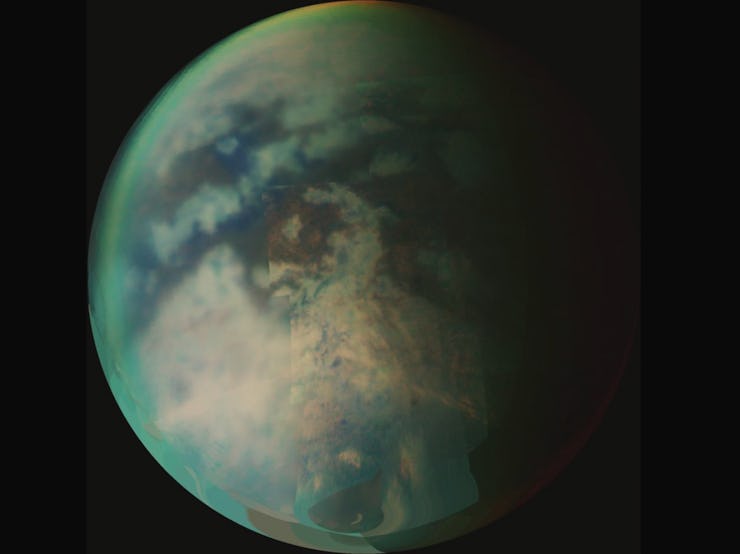Scientists glimpse Titan's startling terrain for the first time
Titan's landscape may be chemically different to Earth's, but the same processes could have shaped them both.

Saturn’s largest moon is an exceptional environment in our Solar System. With its methane-filled lakes, icy volcanoes, and underground caves, it seems worlds apart from our own Earth. But the first geomorphological map of Titan reveals that while its landscape is incredibly impressive and diverse, these factors actually make it strangely similar to Earth.
Other than Earth, Titan is the only other body in the Solar System that is known to have stable liquid on its surface. But unlike Earth, Titan’s lakes, rivers, and seas are made up of the liquid methane and ethane that rain down from its clouds. Titan is also the only moon with a substantial atmosphere and dense-enough air to allow a person to walk through its rough landscape without a spacesuit to weigh them down (although what with the methane rain and lakes, you would have some other hazards to contend with…).
The liquid on Titan is particularly thrilling for another reason: the moon may hold life in the layer of water that flows beneath its icy surface.
The myriad lakes, dunes, craters and plains are mapped out in a new study published this week in the journal Nature Astronomy. These diverse features may have formed through the same geological process that took place on Earth, the paper suggests.
The first geological map of Titan shows its lakes, dunes and flat plains in unprecedented detail.
“Despite the different materials, temperatures, and gravity fields between Earth and Titan, many surface features are similar between the two worlds and can be interpreted as being products of the same geologic processes,” Rosaly Lopes, a planetary geologist at NASA’s Jet Propulsion Laboratory in Pasadena, California, and lead author of the new research, said in a statement.
The map was created from data obtained during NASA’s Cassini mission. The spacecraft Cassini was launched on October 15, 1997 to explore Saturn and its surrounding moons — it conducted 120 flybys of Titan.
The spacecraft dramatically plunged into Saturn’s atmosphere on September 15, 2017, ending its 20-year mission.
Cassini used radar imaging to penetrate Titan’s opaque atmosphere, which is made up of methane and nitrogen, as well as infrared instruments to make out its larger geological structures.
“The Cassini mission revealed that Titan is a geologically active world, where hydrocarbons like methane and ethane take the role that water has on Earth,” David Williams, associate research professor at Arizona State University and a co-author on the study, said in a statement. “These hydrocarbons rain down on the surface, flow in streams and rivers, accumulate in lakes and seas, and evaporate into the atmosphere. It’s quite an astounding world!”
Taking advantage of Titan’s dense atmosphere and low gravity, NASA hopes its craft Dragonfly will one day explore dozens of locations across the icy world -- and possibly discover signatures of life.
NASA is planning a mission to further explore this diverse world in the year 2026. The mission, named Dragonfly, will collect and bring samples from the icy moon back to Earth. It is also hoped to find signs of life — a potential first signal that we are not as cosmologically unique as we may feel.